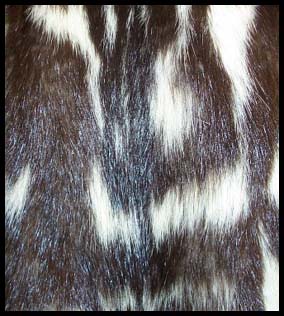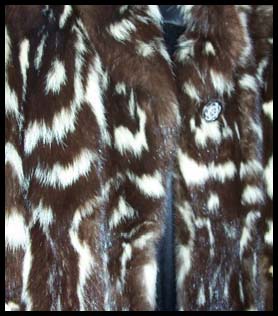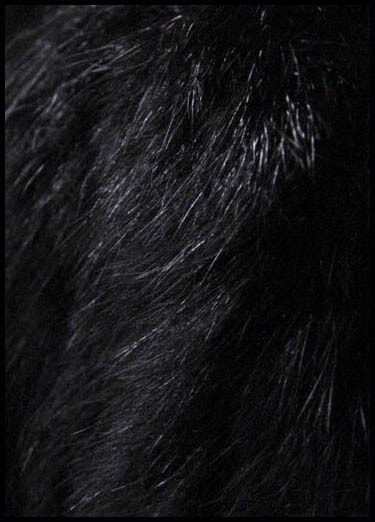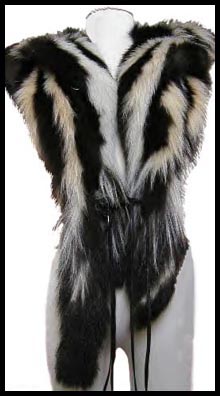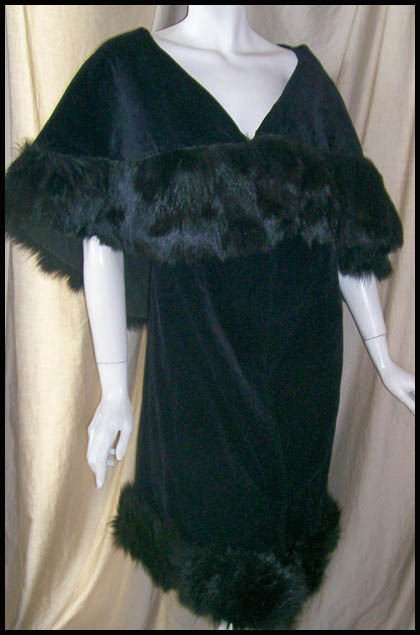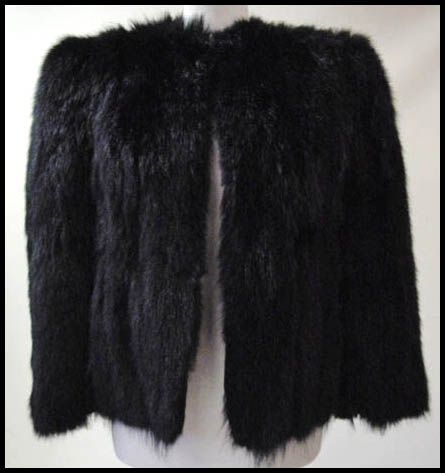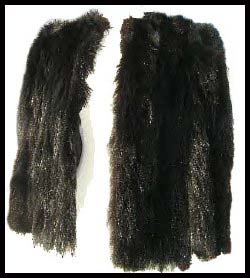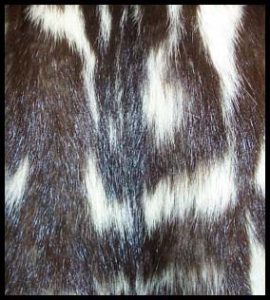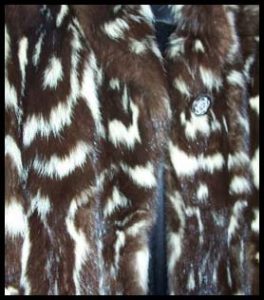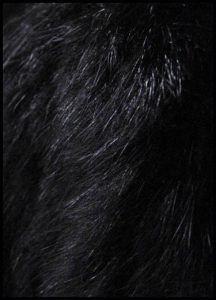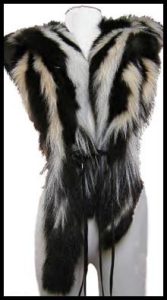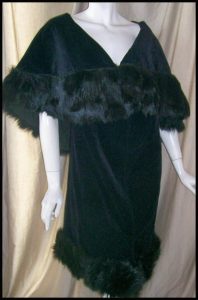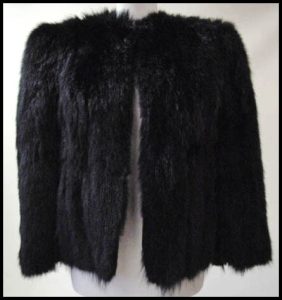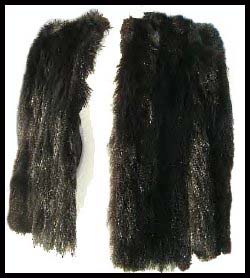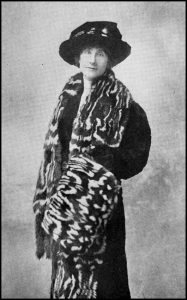Skunk fur has been used in the fur industry since as early as the mid 1800’s, gradually increasing in popularity into the 1900’s. As the United States recovered from the Great Depression a strong market for fur trimmed cloth coats created a demand for skunk, with pelts doubling in price into the early 1940’s.
Skunk fur is long, wavy, and has a glossy appearance. The underfur feels soft but the guard hair, which is about 1″-2″ in length, feels a bit more coarse or bristly.
Some skunks have a striped pattern, while others have a spotted pattern.
Spotted skunks have sometimes been referred to as civet cats. The two are not the same animal, nor are they the same species, but they have some similarities in appearance and both omit scents from their glands. Civet cat can be seen here.
Written by Caryn McGregor/ Pauline Cameron & Katie Kemsley
